by Jerry Kilpatrick
Why Do a Project on a Lean Basis?
Greg Howell and Hal Macomber
Why Do a Project on a Lean Basis?
Underneath the simple answer, “It will cost less, get done earlier with far fewer injuries, and better quality,” there are better and more powerful answers. These include less suffering for the customer and project team, greater accountability, forward-looking control – steering really – increased ability to cope with uncertainty and complexity, and the ability to identify and deliver more value to more people as the project unfolds. Such answers sound too good to be true, and they are too good to be true for those stuck in current practice. So what is lean project delivery? How does it work? What tools do we use?
What is a Project?
A project is a promise – a very big promise – delivered by people working in a network of commitments. The act of design creates the conditions of satisfaction that mark the delivery on that promise. During construction, the physical work, movement, and shaping and installation of materials delivers on promises made in planning as people organize to do their work. When people make reliable promises and do what they say, others in the network of commitment are free to make their promises resulting in predictable workflow downstream. When downstream planners can count on work being ready, crews can work closer together without sacrificing productivity. Project duration is reduced, productivity goes up across the board, and the site is safer. A lean approach is achieved by involving project performers – people responsible for delivering on their promises – in planning the work that they will perform. It occurs through successive levels of planning starting from overall promises to weekly and daily planning where the details of what will be done by whom on a specific date is promised. The lean approach exploits what people learn as they perform. Planning continues throughout the project for refining, learning, innovating, and adjusting to the future that unfolds. Control is redefined when the work in projects is understood as making and keeping commitments. By control, we mean the ability to make things happen as intended. Projects that look good on the cost and schedule report are not necessarily under control by this definition. Too often people choose and do work to make their accounts look good rather than keep their promise to deliver what is needed downstream. This sort of thing can be traced to a lack of accountability. Be clear about this: Accountability arises when a person makes a promise and accountability vanishes when they don’t have the freedom to say, “No.” Telling people to get their numbers up destroys accountability to others in the line of work. New possibilities, beyond what we can explore on these two pages, open as the flow of work becomes more predictable. Perhaps the most important benefit predictable flow brings is close coordination in the midst of greater complexity. Nature knows this rule: predictability at the cellular level must increase as complexity increases or the organism cannot maintain its integrity.
Tools and Tool-Users
The tools are the ones you know… used differently with a different intention: a milestone plan for establishing the collection of promises, the lookahead plan for making work ready, a weekly work plan to elicit commitments, and a daily meeting to report promised completions, learn from experience, and to give aid to each other. People are the most powerful project management tool. Shifting to lean project delivery requires clearheaded and determined leadership, people who understand that this is the right thing to do. In return, they can expect both better project performance and a better industry because this system accelerates learning and increases individual accountability.
The Future Is Uncertain
The primary reason to do projects on a lean basis is for the ability to adjust as the always uncertain and unknowable future unfolds. The usual approach, to do the majority of the planning and scheduling before the project begins, puts a straitjacket on the project team. Things still go wrong on lean projects, but the ability of the team to work in trust together allows them to make the best of each circumstance. They can bring their collective creativity and talent to bear in ways unforeseeable in the initial program or master schedule. Value is what the client says it is. Their understanding will change as the world changes and as new possibilities are brought forward. On lean projects, value is created and delivered when promising connects the work of specialists to the value delivered to the customer and coordinates their action. Greater value is delivered and customer satisfaction increased when the team adjusts to the changing situation and customer aims and interests.
Your Next Steps
My mission is to demonstrate that a business embracing practices of kindness, respect and empowerment will be very, very successful and profitable.
Ready for a new level of success in your business?
Working with hundreds of companies in over 8,000 meetings for 25 years has shown me if you take the right actions, you will get the best results. The GNA program helps you break free from the exhausting effort to run your business. We offer a step-by-step program helping you to thrive and build the business you always wanted.
Explore how you can achieve a new level of success in your company, schedule time with me today: https://calendly.com/greg-479/free-30-min-discovery
© 2005 Lean Project Consulting, Inc. www.leanproject.com


